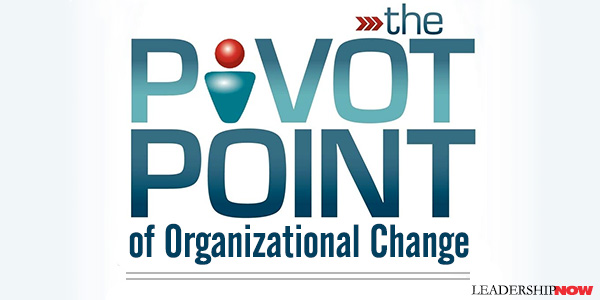 |
 |
08.06.12

The Pivot Point of Organizational Change
WE know that the vast majority of organizational change initiatives fail. Why? The general answer is our resistance to change. But what if it’s something else? In The Pivot Point, authors Victoria and James Grady ask, “What if this is not a ‘resistance’ problem for which the organization must engineer a solution, but a deeper ‘people’ problem that the organization must first learn to understand and respect?” Perhaps the problem is less about resistance to change and more about attachment to some thing. Change involves destruction and insecurity. You have to give up something to create something new. It’s the nature of change. Sometimes it is very hard to give up that thing. It creates anxiety, frustration and insecurity. “We form attachments to objects unique to our organizational environment and we lean on them for support.” What we react to is our loss of attachment. The essence of the problem is not resisting change per se, but resisting the distress inherent in somehow losing the objects that we attach to or lean on in our work environment. These objects can be people, systems, places, things, or even abstract concepts such as ideas or environments—anything that provides us with a sense of “attachment” to the organization. If this is the case, then the challenge is to identify those attachments and the impact the proposed change will have on them, and design a solution around them—introducing changes will maintain healthy attachments. The authors refer to this as the Pivot Point of organizational change success: “when we recognize the significance of our individual reaction to organizational change, take appropriate steps to support healthy attachment behaviors, and make use of current information to optimize the situation for all concerned.” The authors suggest that “to mitigate the negative effects of losing our sense of stability, one way an organization can ease the transition of a change initiative is to look for a generic substitute to replace the lost object until a new sense of stability is restored. Those replacements could be “a leader, a favored object, a method of communication, a continuing education series, a technology, a colleague, a culture, or any combination of these items.” They also present other methodologies to prevent or modify symptoms before or as they are developing. It is possible to discover which symptoms are most likely to escalate, allowing you to implement a strategy to mitigate these symptoms before you ever begin your organizational change initiative.

Posted by Michael McKinney at 06:28 PM
|
BUILD YOUR KNOWLEDGE
 

How to Do Your Start-Up Right STRAIGHT TALK FOR START-UPS 
Grow Your Leadership Skills NEW AND UPCOMING LEADERSHIP BOOKS 
Leadership Minute BITE-SIZE CONCEPTS YOU CAN CHEW ON 
Classic Leadership Books BOOKS TO READ BEFORE YOU LEAD |